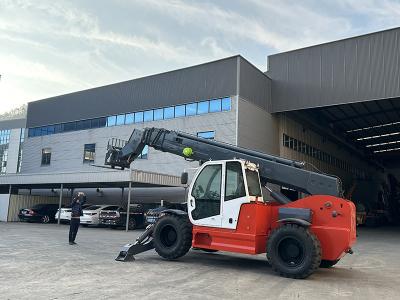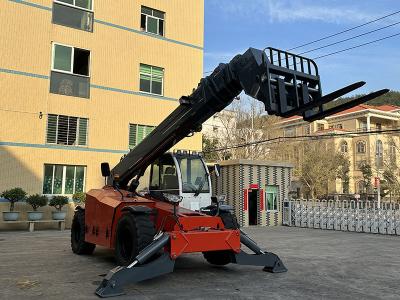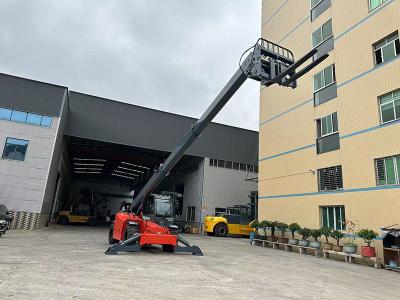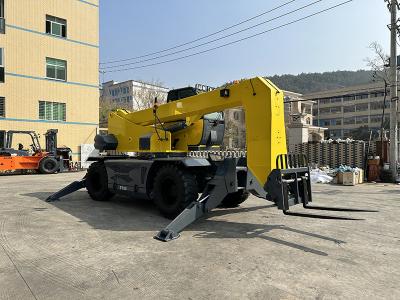To solve the problem of compact rough terrain forklift hand brake failure, you can refer to the following methods:
1. Park the rough terrain telescopic forklift on a flat road, first tighten the forklift parking brake control handle, and then start the forklift engine accessories. If it can start (that is, the forklift engine does not stall), the forklift can move forward or backward, indicating parking. The braking effect is poor and needs to be disassembled, inspected and adjusted.
2. For disc brakes, after tightening the control handle, if the friction plate and the brake disc are not in close contact, you should first adjust the adjusting nut on the linkage arm pull rod: when the nut is tightened, the gap becomes smaller; on the contrary, the gap becomes larger. If it works, it means the linkage arm is improperly adjusted. Otherwise, turn the two adjustment screws on the upper end of the brake bracket to adjust so that the two shoes are parallel to the brake disc. If it can adhere tightly but the braking effect is poor, you should check whether the friction plate is oily, whether the matte nails are exposed, whether the friction plate is ablated or cracked, etc. Take appropriate measures according to the situation: such as cleaning, replacement, adjustment, etc.
3. If the problem is not solved after the above inspections or adjustments, the working surface of the brake disc should be checked. If there are grooves due to wear and tear, they should be polished. If serious, they should be replaced.
4. For drum brakes, when the control handle is tightened, the brake shoes and the brake drum are not in close contact. It may be that the cable is too long or the linkage mechanism is loose. Adjustments should be made to make the handle stroke meet the requirements. As for the brake clearance or the working condition of the brake pads, since the parking brake and the service brake are shared, when the service brake effect is good, there is no need to consider brake problems.




















